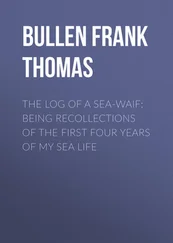'That was in the Pacific,' murmured Sahling, 'in 1996 on the RV Sonne , a hundred or so kilometres off the coast of Oregon.'
'There wasn't a moment to lose. Methane hydrate is highly unstable,' continued Bohrmann. 'I don't suppose any of you will have heard much about it, so I'll try to explain without boring you senseless. Let's imagine the ocean seabed. There's a lot going on down there, but we're going to focus on gas. Biogenic methane, for example, forms over millions of years when plants and animals decay. Large amounts of carbon are released as algae, fish and plankton decompose. Bacteria play a central role in that. One of the key things to remember, though, is that the temperature on the ocean floor is very low, but the pressure's very high. For every ten metres you descend through the water, you gain another bar of pressure. With breathing apparatus you can get to fifty metres, or maybe even seventy, but that's about the limit. The record is a hundred and forty, but I wouldn't recommend it – almost everyone who tries it ends up dead. In any case, we're talking about depths in excess of five hundred metres, and that changes the physics completely. So, when high concentrations of methane seep through the seabed something extraordinary happens: the gas combines with cold water and forms ice. They call it "methane ice" in the papers, but that's not entirely accurate. It's not the methane that freezes, but the seawater around it. Groups of water molecules solidify, forming cage-like structures around each methane molecule. Vast amounts of gas are compressed within the tiniest spaces.'
A schoolkid stuck up his hand. 'Five hundred metres isn't exactly deep, is it?' he said. 'Jacques Piccard went down eleven thousand metres in his bathyscaphe. Now, that's really deep. Why didn't he see ice down there?'
'So you know the story of the deepest manned dive. Very good. But how would you explain it?'
The teenager thought for a moment, then shrugged.
'Well, it's obvious, really,' said one of the girls. 'There's not enough life down there. Once you get below a thousand metres not much decays, so there's hardly any methane.'
'I knew it,' muttered Johanson from his vantage-point on the bridge. 'Women are simply more intelligent.'
Bohrmann smiled at her. 'That's right. Although, as always, there are exceptions. Methane hydrates can also be found in deeper water, even at depths of three thousand metres, if enough sediment containing organic matter is washed down there. It sometimes happens in marginal seas. As a matter of fact, we've also found methane hydrates in very shallow water, where there isn't much pressure. But as long as the temperature is low enough, hydrates will form – on the polar shelf, for example.' He turned back to the rest of the group. 'The main deposits of methane hydrates – compressed methane – are on the continental slopes at depths of between five hundred and a thousand metres. One of our recent expeditions took us to an underwater ridge just off the American coast. It was five hundred metres high and twenty-five kilometres long, and made mainly of hydrates. Some was buried deep within the rock, but the rest lay exposed on the seabed. Since then we've found out that the oceans are full of it, but another important discovery's been made: methane hydrates are the only thing holding the continental slopes together. They act like cement. If you took away the hydrates, the slopes would look like Swiss cheese. Without the hydrates, there'd be landslides.' Bohrmann paused to let his words sink in. 'But there's more to it than that. Like I said, methane hydrates are only stable in conditions of low temperature and high pressure. So, you see, not all the gas compresses, just the top layer. Under the Earth's crust the temperature increases, leaving pockets of methane deep in the sediment that never freeze. The methane stays in a gaseous state, with the frozen layer of hydrate acting like a lid to trap it.'
'I read about that,' said the girl. 'Aren't the Japanese trying to extract the methane?'
Johanson smiled. There was always one kid in every class who was exceptionally well prepared and knew most of the lesson before it had begun. He guessed she wasn't too popular with her peers.
'Oh, it's not just the Japanese,' said Bohrmann. "The whole world would like to extract it. But it's not that simple. When we were collecting our samples from a depth of eight hundred metres, the hydrates started to dissociate when they were half-way to the surface. By the time we had them on board, there was only a fraction of what we'd extracted. Methane hydrates are incredibly unstable. A temperature increase of just one degree at a depth of five hundred metres might be enough to destabilise the entire stock stored at that level. We knew we had to act quickly. We grabbed the lumps of hydrate and plunged them into liquid nitrogen to stop them dissociating. Come and have a look over here.'
'He's got a knack for this,' said Johanson, as Bohrmann led the class to a shelving unit made of stainless-steel frames. Containers of various sizes were stacked inside, with four tank-like, silvery barrels at the bottom. Bohrmann dragged one out, slipped on a pair of gloves and opened the lid. There was a hissing noise and vapour rose from inside. A few kids shrank away.
'It's only nitrogen.' Bohrmann reached down into the container and pulled out a fist-sized lump of something that looked like muddy ice. Within a few seconds it was fizzing and cracking. He beckoned to the girl, then broke off a chunk and held it out to her. 'It's pretty cold, but it won't hurt you,' he said.
'It stinks,' she exclaimed.
Some of the others laughed.
'Yep, like rotten eggs. It's the smell of gas dispersing.' He broke off more chunks and handed them round. 'The dark threads in the ice are seams of sediment. In a few seconds there'll be nothing left but a few specks of dirt and a puddle of water. The ice melts and the molecules of methane are released from their cages to escape into the air. Or, to put that in context, an apparently stable piece of seabed disintegrates, leaving almost nothing behind. That was what I wanted to show you.'
The kids' attention was on the fizzing ice. Bohrmann waited until it had melted, then continued: 'Now, while you were watching, something else happened invisibly. It's why we respect hydrates as much as we do. Remember I said that the methane was compressed by the ice crystals? Well, from every cubic centimetre of the hydrate that you were clutching, a hundred and sixty-four cubic centimetres of methane escaped into the air. During dissociation, the volume of methane increases by a factor of a hundred and sixty-four in the blink of an eye – leaving you with just a puddle in your hand. Taste it, if you like,' he said to the girl, 'and tell us what you think.'
She gazed at him in horror. 'But it smells!'
'Not any more. The gas has dispersed. But if you're worried about it, I'll do it.'
The girl lowered her head towards her hand and licked 'Normal water!'
'That's right. When seawater freezes, the salt separates out. On that basis, the Antarctic is the largest reservoir of fresh water on the planet. Icebergs are made of fresh water.' Bohrmann closed the tank of liquid nitrogen and pushed it back into the unit.
'The idea of exploiting methane hydrates is hugely controversial, and you've just seen why. Suppose we were to destabilise the hydrates? We might set off a chain reaction. Imagine what would happen if the substance cementing the seabed suddenly evaporated. Think how it would affect our climate if methane from the deep sea escaped into the air. Methane is a greenhouse gas. It could heat up the atmosphere, which in turn would warm the seas, which would trigger the breakdown of hydrates, and so on. That's the kind of problem that keeps me and the other scientists here busy.'
Читать дальше












